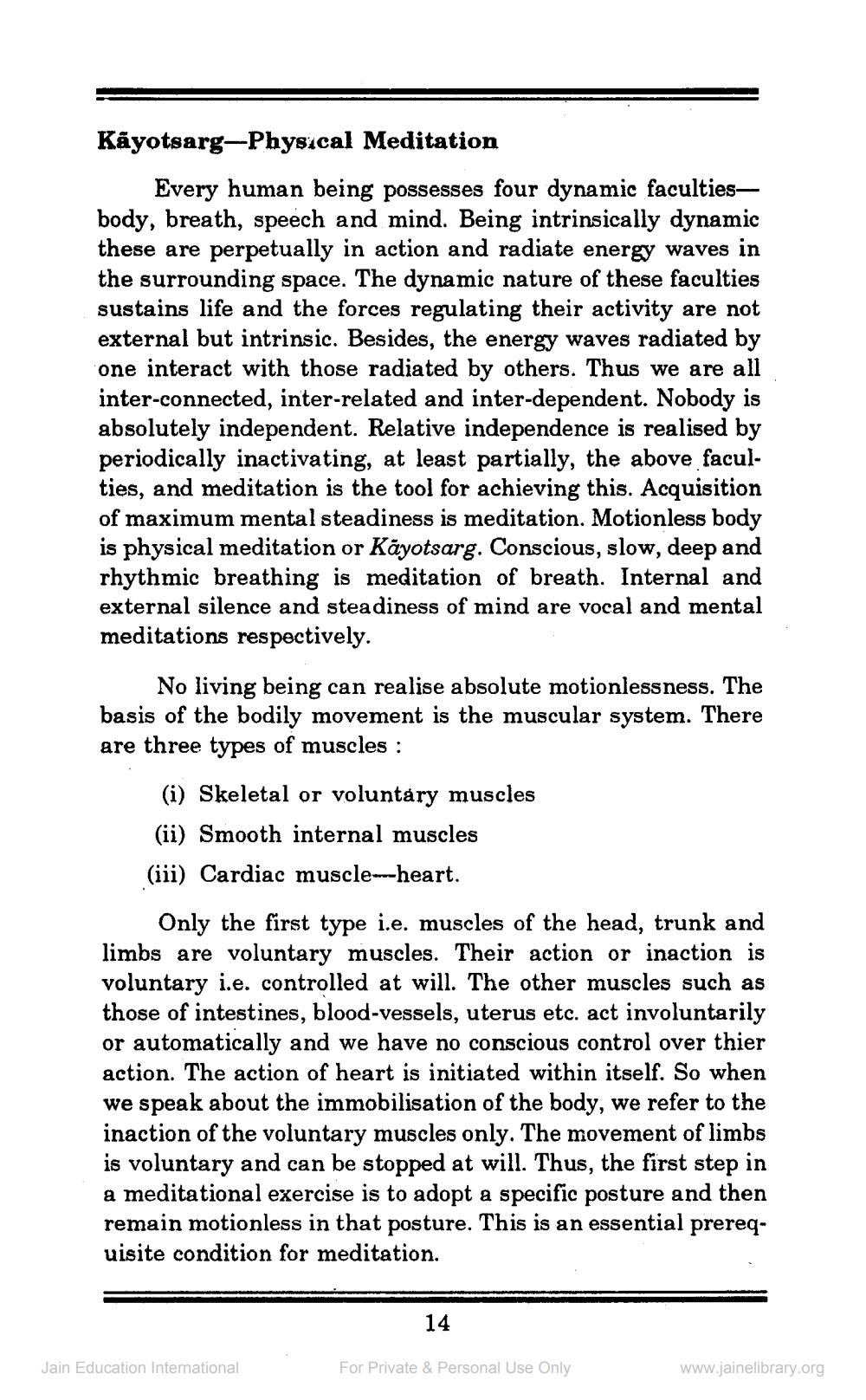________________
Käyotsarg-Physical Meditation
Every human being possesses four dynamic facultiesbody, breath, speech and mind. Being intrinsically dynamic these are perpetually in action and radiate energy waves in the surrounding space. The dynamic nature of these faculties sustains life and the forces regulating their activity are not external but intrinsic. Besides, the energy waves radiated by one interact with those radiated by others. Thus we are all inter-connected, inter-related and inter-dependent. Nobody is absolutely independent. Relative independence is realised by periodically inactivating, at least partially, the above faculties, and meditation is the tool for achieving this. Acquisition of maximum mental steadiness is meditation. Motionless body is physical meditation or Kāyotsarg. Conscious, slow, deep and rhythmic breathing is meditation of breath. Internal and external silence and steadiness of mind are vocal and mental meditations respectively.
No living being can realise absolute motionlessness. The basis of the bodily movement is the muscular system. There are three types of muscles :
(i) Skeletal or voluntary muscles (ii) Smooth internal muscles (iii) Cardiac muscle-heart.
Only the first type i.e. muscles of the head, trunk and limbs are voluntary muscles. Their action or inaction is voluntary i.e. controlled at will. The other muscles such as those of intestines, blood-vessels, uterus etc. act involuntarily or automatically and we have no conscious control over thier action. The action of heart is initiated within itself. So when we speak about the immobilisation of the body, we refer to the inaction of the voluntary muscles only. The movement of limbs is voluntary and can be stopped at will. Thus, the first step in a meditational exercise is to adopt a specific posture and then remain motionless in that posture. This is an essential prerequisite condition for meditation.
14
Jain Education International
For Private & Personal Use Only
www.jainelibrary.org




